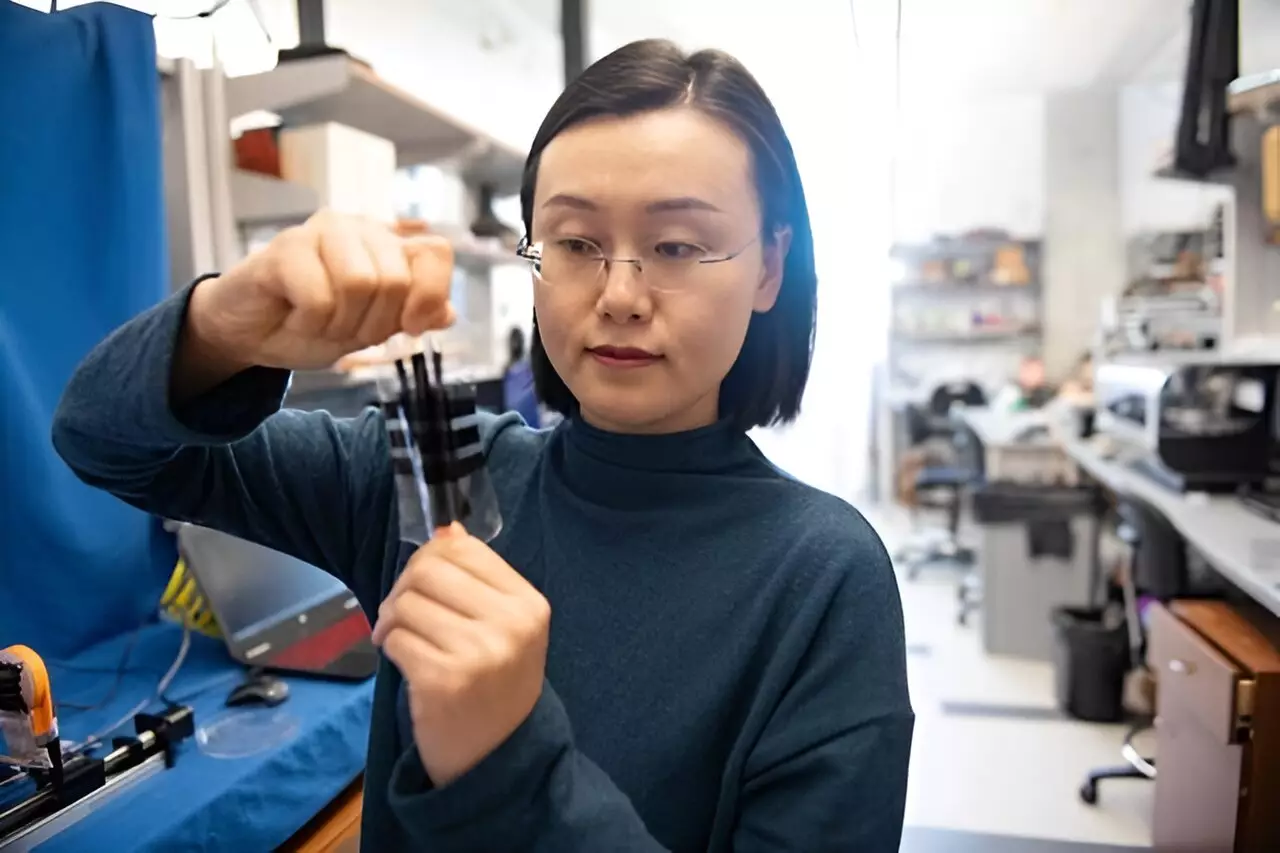The development of a first-ever stretchy electronic skin by researchers at The University of Texas at Austin has opened up new opportunities in the field of robotics and beyond. This innovative e-skin is designed to provide robots and devices with the softness and touch sensitivity akin to human skin, allowing them to perform tasks that require precision and force control. This breakthrough addresses a significant limitation in existing e-skin technology, where sensing accuracy diminishes as the material stretches. However, the newly developed stretchable e-skin maintains consistent pressure response even when stretched, making it a game-changer in the industry.
The stretchable e-skin holds immense potential in the medical field, particularly in the realm of patient care. With the aging population increasing globally, the demand for caregivers exceeds the available resources, creating a need for innovative solutions. Robots equipped with this advanced e-skin could assist in tasks such as checking a patient’s pulse, providing massages, or offering essential care. By incorporating human-like softness and sensitivity, these robotic assistants could help alleviate the caregiving crisis and ensure efficient and gentle patient care.
In addition to medical applications, stretchy electronic skin technology can also be deployed in disaster response scenarios. Human-caring robots equipped with this revolutionary e-skin could navigate hazardous environments, such as earthquake sites or collapsed buildings, to search for and assist injured individuals. The ability of the e-skin to sense pressure from contact allows robots to adjust the force they apply, making them capable of performing delicate tasks like administering CPR or safely handling objects without causing damage. This versatility makes stretchable e-skin a valuable asset in critical situations where human intervention may be limited.
The key to the success of the stretchy electronic skin lies in the development of a hybrid response pressure sensor that combines capacitive and resistive elements. This unique sensor design, coupled with stretchable insulating and electrode materials, enables the e-skin to maintain accurate pressure sensing capabilities even when stretched. Through years of research and collaboration across multiple engineering disciplines, the team led by Professor Nanshu Lu has achieved a significant technological milestone that paves the way for diverse applications in robotics and beyond.
Professor Lu and her team are actively exploring potential applications of the stretchy electronic skin and have already initiated collaborations with experts in robotics and computer science. By working towards integrating the e-skin technology into robotic arms and other devices, the researchers aim to bring their innovation to market. The filing of a provisional patent application underscores the commercial potential of the e-skin technology, signaling the possibility of future partnerships with robotics companies to accelerate its adoption in various industries.
The development of stretchy electronic skin represents a significant advancement in robotics and human-robot interaction. With its unique capabilities and versatile applications, this innovative technology has the potential to revolutionize various sectors, ranging from healthcare to disaster response. By leveraging the softness and touch sensitivity of human skin, robots equipped with stretchable e-skin can perform intricate tasks with precision and efficiency, setting a new standard for human-robot collaboration in the digital age.


Leave a Reply